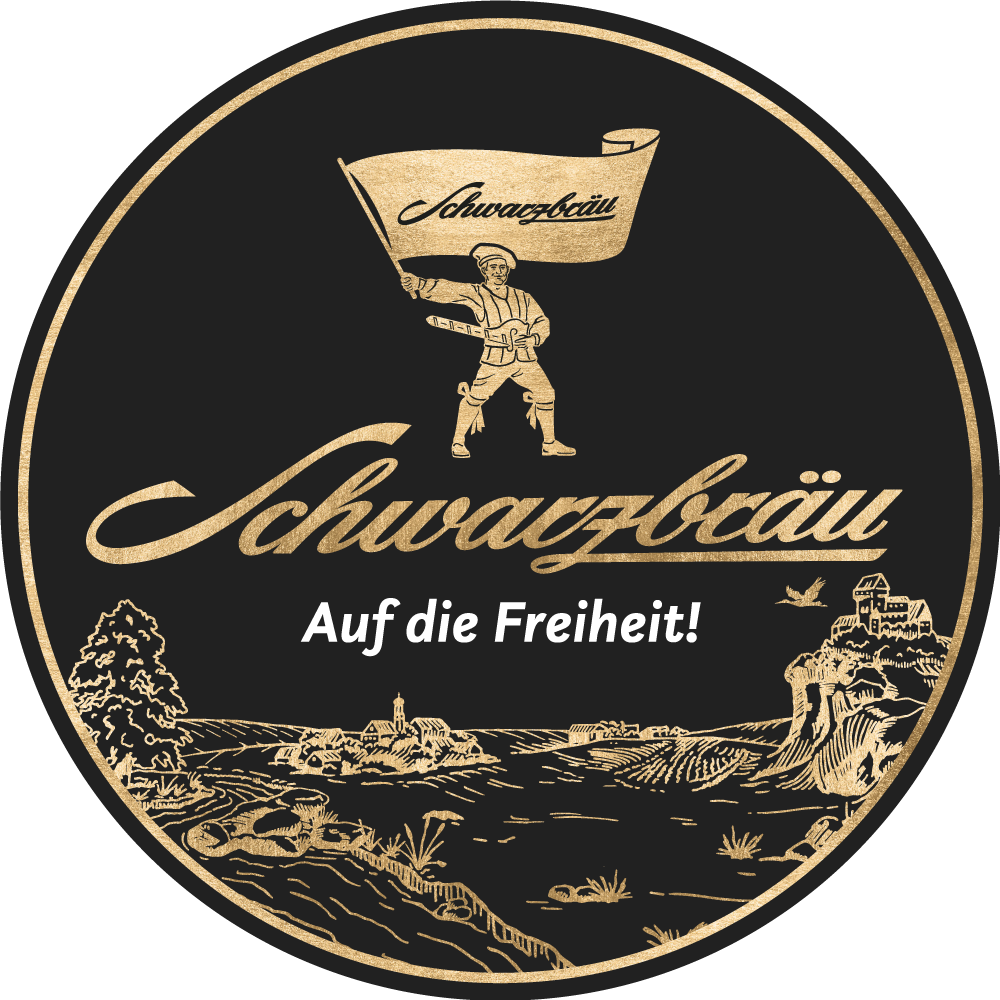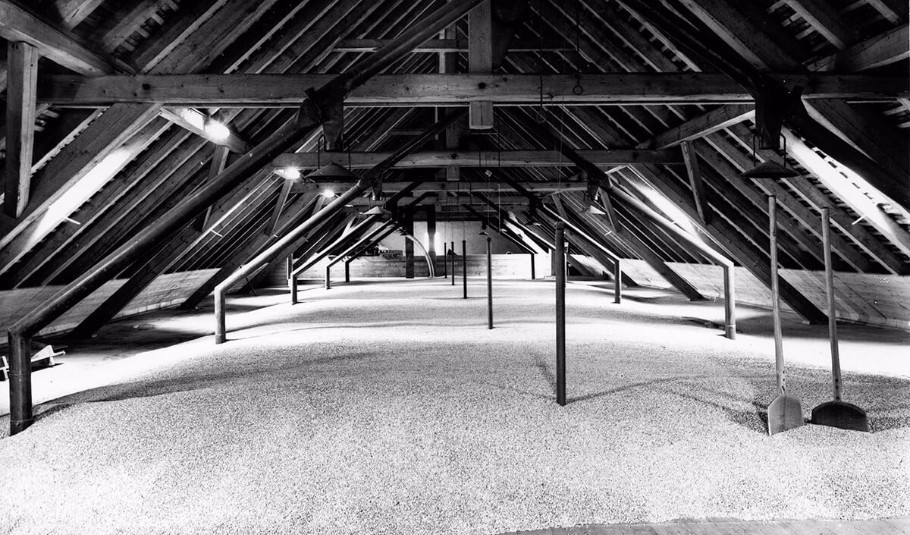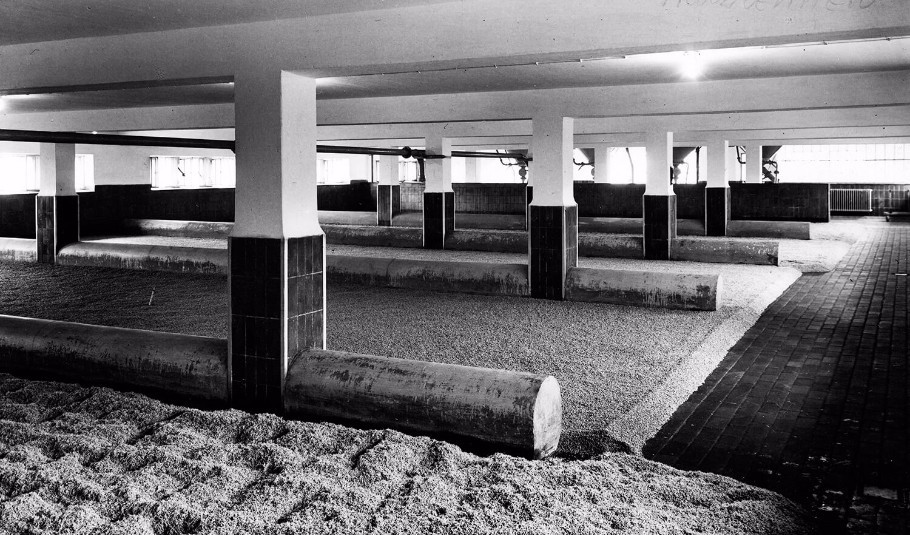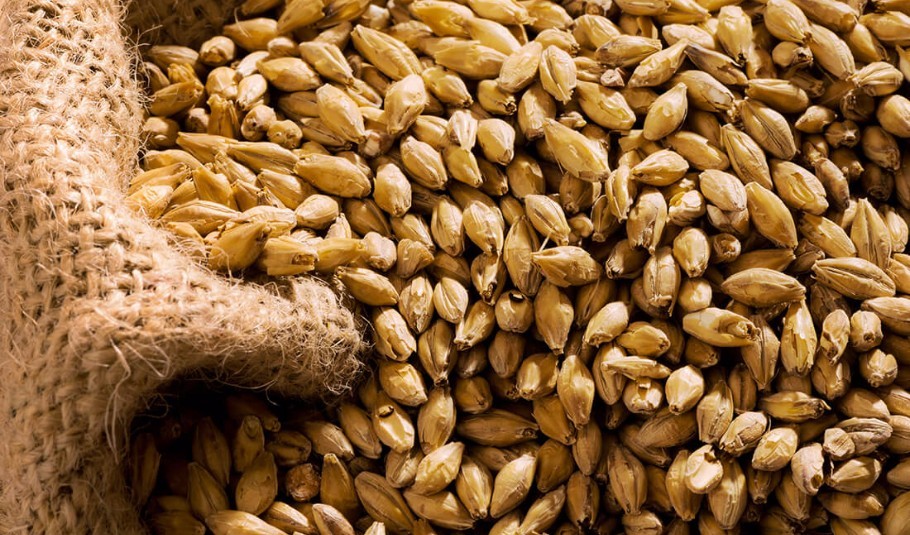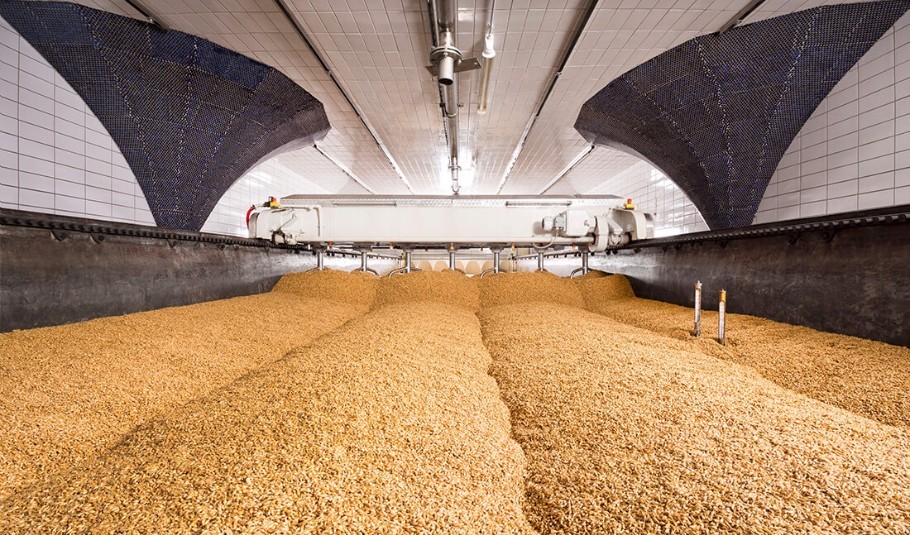Skip the malt? Use only hops?
"Hopfen und Malz - Gott erhalt's". "Hops and malt - may god preserve them" is embossed on plaques in many breweries. Not only does this hint at deeply religious values held by many brewers, but also shows the great importance of hops and malt for the Bavarian Purity Law, which also includes the ways brewing malt is used.
Schwarzbräu malthouse
Before the industrialisation of malt production, it was customary for breweries to produce their own malt. Intense manual labor on so-called malt-lines was required. In the mid-twentieth century, most breweries gradually stopped this practice, instead buying their malt from commercial or industrial malting houses. On the one hand, brewing operations could now concentrate on expansion. On the other hand, they could outsource a labor-intensive process. Schwarzbräu is one of the few remaining breweries in Germany which operates a malt house for its own barley malt requirements. The grain is purchased from farmers in the region and is subject to strict quality control. All processes in the malthouse are natural processes. Germination is controlled purely by moisture, temperature and ventilation.
Barley & malt
Malt is germinated and dried grain produced specifically for the production of beer. The most important grain for the production of brewing malt is spring malting barley and brewer's wheat. In addition, other types of grains, such as rye, oats and spelt, can also be processed into brewing malt. For beer production, brewers prefer two-row spring malting barley, which is cultivated in different varieties. Brewing grains have very narrow analytical specifications regarding protein content, water, grain size, diastatic power and germination. The particular variety of grain and its overall robustness are essential factors for maltibility. The grain should be refrigerated and ventilated in order to avoid damage caused by improper storage and to maintain acceptable germination rates. The process of malting is crucial when beer is brewed according to the Bavarian Purity Law: enzymes are formed in a natural way, which, during mashing, convert starch into malt sugar. This malt sugar and further components of the wort are a source of nutrients for the beer yeasts, enabling fermentation of alcohol.
Malt production
The malter carefully selects grain batches which are suitable for malting. Immediately after delivery, the grain is cleaned and sorted in the barley cleaning plant: Weaker (smaller) grains and half grains, as well as straw and non-sowing seeds are removed. After this, the grain has to rest until the so-called dormancy, the phase during which the grain is not yet ready to germinate, has passed. Traditional varieties of barley require a longer germination phase, while modern varieties do not.
Soaking
The grain is washed in the steeping chamber to remove dust, loose hulls and straw fibers. The grain then steeps in vats for 1-2 days, switching between wet- and dry-steeping. Water is added in the wet phase to soak the grain, while the grain is aerated in the dry phase. This is where the sowing of seed outdoors is simulated. Moisture and increased temperatures induce the seedling - the plant's embryo - to awaken from dormancy.
Germination
The soaked barley is then transferred to the germination box (in earlier times to the malting floor), where it is allowed to germinate for 6 days. Leaf and root buds begin to sprout from the kernel. The embryonic seedling produces enzymes and the cell walls, which protect the starch, become porous. The germinating grain is constantly aerated and gently turned over in order to encourage even germination while not allowing the roots to become entangled. In this phase the grain is referred to as "Grünmalz" or green malt.
Drying
Next, in the kiln-drying phase, the moisture trapped in the green malt is reduced from 40-45% down to 4-5%. Kiln-drying refers to the gently removal of water from the green malt. While the germ bud withers, most of the essential enzymes remain intact. In the first phase of kiln-drying, the air, which flows steadily through the green malt, is slowly heated to about 35° C. The outflowing air is thereby saturated to 100% with moisture taken from the green malt. In this environment, any water left in the outer layers of the kernel vaporizes, protecting the enzymes. In the second phase, known as kilning, the temperature is slowly increased, which dries the core of the kernel. The temperature levels and the length of drying in this phase determine the eventual color of both the malt and the beer. The higher the temperature and the longer this phase lasts, the darker the malt and therefore the beer will be. Kiln-drying lighter malt happens at temperatures from 75-80° C, while darker malts are produced at 105-120° C. Roasted malt can additionally be roasted, resulting in much higher temperatures, destroying most of the enzymes but producing even more intense malt tones and aromatic components. To complete the process, the dried malt is cleaned and freed from germinating roots.
Malt & beer
If hops are the soul of beer, then malt is its body. By using various combinations of brewing malts and malt colours, with his recipe the brewmaster regulates the original gravity, mouthfeel and color of the beer. The purposeful selection of malts also influences the aroma because it is the malt which contains the components relevant to creating characteristic beer styles and guiding yeast activity. In short, it is malt selection which determines a beer's taste-profile and overall palatability. During the brewing process, the quality of the selected malts becomes apparent during lautering and filtering. It is the malt which delivers enzymes and starch. The starch is subsequently converted into malt sugars by the enzymes. During lautering, the solid and liquid components are seperated: spent grain and wort. In the fermentation cellar, the malt sugar becomes "food" for the yeasts that work through fermentation to produce alcohol and carbon dioxide inside the fermentation tanks. Protein molecules are divided by the enzymes and a portion is fed to the yeast to promote their growth while the rest is left to form the body of the final brew. Malting processes guide the distribution of small-, medium- and long-molecular proteins. The first two are essential as yeast nutrients and the long-molecular is important for the foam production. The Bavarian Beer Purity Law stipulates that only water, hops, malt and yeast are to be used for brewing beer. Of these four ingredients, it is the selection of brewing malts which allows for such variety in beer styles. Be it barley, wheat or rye, bright or dark or roasted: Pilsener malt is the lightest, Munich malt darkens the brew. Combining these basic ingredients with just the right selection of caramel- red-, roast- and other specialty malts is where beer brewing becomes an art form. Having a large selection of enjoyable beer styles to choose from is the delight of every beer drinker.
